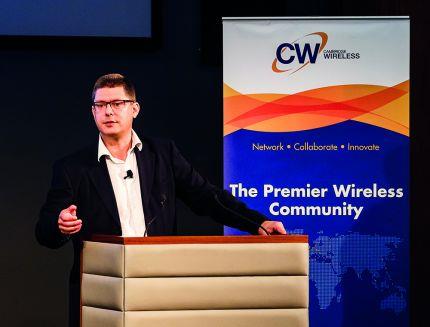FWIC: Tomorrow's wireless world
Sam Fenwick reports from the first day of Cambridge Wireless’s 8th Future of Wireless International Conference, and its Automotive and Transport SIG meeting
The 8th Future of Wireless International Conference (FWIC), took place at IET London, Savoy Place and began with an introductory session on the conference’s overall themes – including the role and needs of verticals and innovation.
Simon Fletcher, CTO of Real Wireless and chair of the event’s organising committee, says that while 2014 was focused on exploring how to bring mobile services to emerging markets together with transformation in consumer markets, 2015 prioritised exploring the potential for disruption and the “5G vision”, which concluded that there needs to be greater attention on how this will affect and benefit verticals – and that is the focus of this year’s conference.

Simon Fletcher explained that this year's FWIC is focused on the verticals that stand to benefit from 5G
Eileen Burbidge, partner at Passion Capital, highlighted the fact that the tech sector is the fastest-growing in the UK, accounts for 11 per cent of GDP and turned over £160 billion last year. She believes that “digital technology is leading Britain into the next industrial revolution”, but the sector “could do better” in terms of commercialisation.
Register now to continue reading
Thank you for visiting Land Mobile, register now for free and unlimited access to our industry-leading content.
What's included:
-
Unlimited access to all Land Mobile content
-
New content and e-bulletins delivered straight to your inbox



